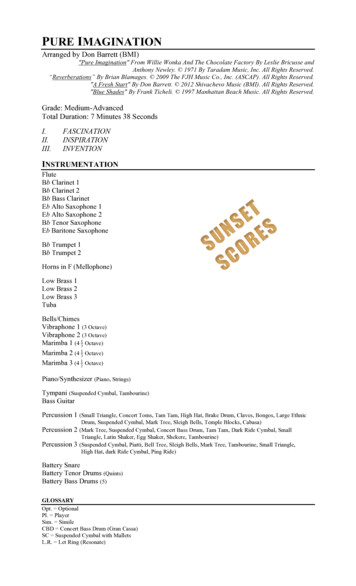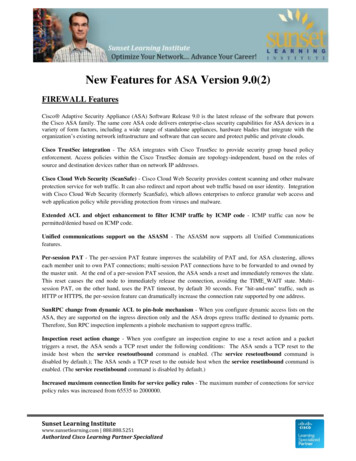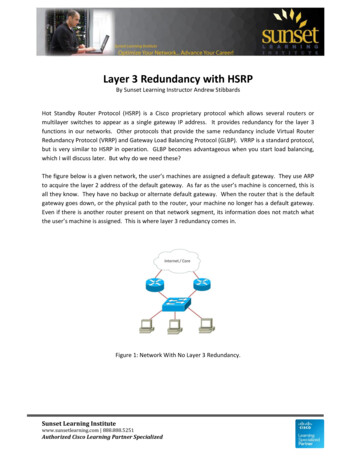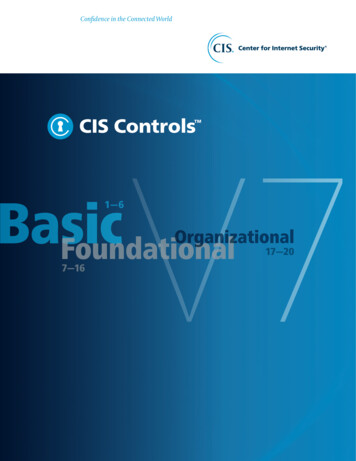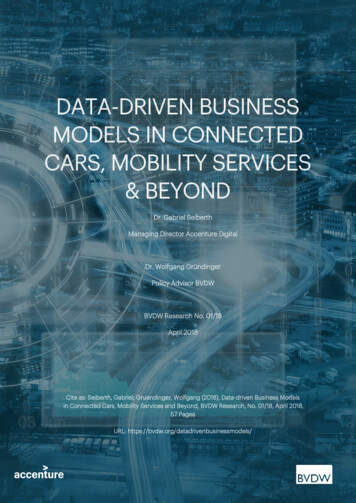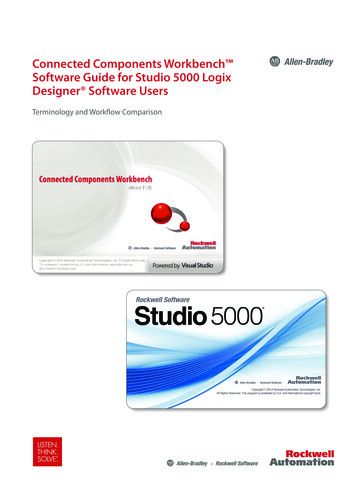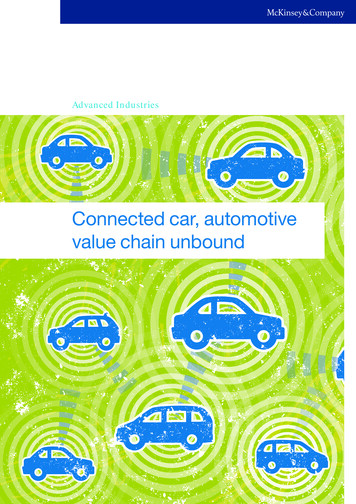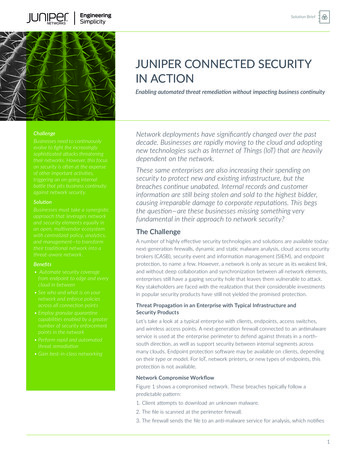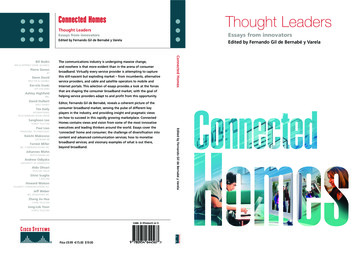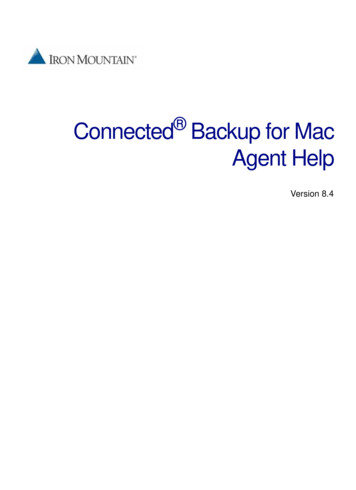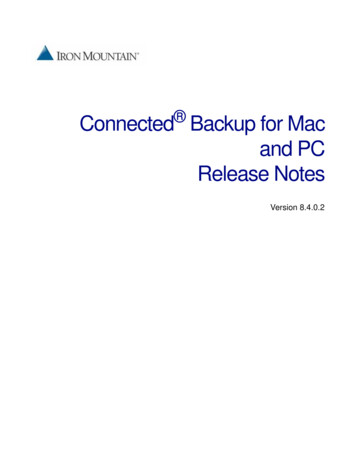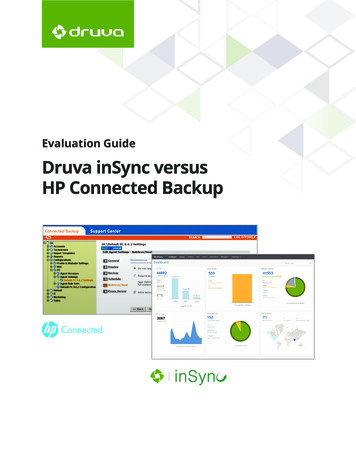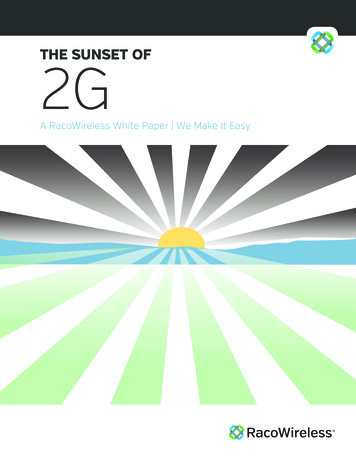
Transcription
THE SUNSET OF2GA RacoWireless White Paper We Make It Easy
THE SUNSET OF 2GThe dawn of 4G LTE connectivity brings with it new possibilities for connectivityand mobile devices. But as the introduction of any disruptive technologyinherently displaces previous technologies, the widespread demand for 4G isushering in the decline of 2G connectivity – otherwise referred to as the ‘2GSunset’. As a solution provider in the M2M or mobile industry, the 2G sunsetcould have a significant impact on your business. This paper will discuss the top10 things you need to know about the sunset of 2G.1. What is it?The 2G Sunset, as stated previously, refers tothe imminent decommissioning of some 2Gnetworks and replacement with 3G and 4Gnetworks over the next few years. Somemobile operators in the US are shutting downtheir 2G networks in order to use thatspectrum to increase data capacity andspeed for 4G customers. Some carriers, likeAT&T and Verizon, have already begun takingdown their 2G capability and “re-farming”their towers for other technologies like 4GLTE.(2) Why is it happening?In short, the 2G sunset is the result of simplesupply and demand. The proliferation of thesmartphone has caused huge increases inpacket-data usage – global mobile datatraffic grew 81 percent in 2013 – and it isexpected to increase 11-fold by 2018 (CiscoReport 2014). This is forcing mobile carriersto acquire more spectrum (the radio wavesused to transmit data packets), and deploymore spectrum-efficient protocols like 4G LTEin their existing spectrum in order to meetdemand. 4G coverage has been expanding1
THE SUNSET OF 2Grapidly and is expected to constitute morethan half of the total mobile traffic by 2018.The spectrum, in some cases, in use by older2G technologies, is needed to make newertechnologies like 4G LTE stronger and faster.(3) A Little More Background: GSM vsCDMATo really understand why we are in thissituation requires some (very simplified)backtracking. There are two major wirelessnetwork technologies in the United States:CDMA and GSM. Of the big four carriers,Sprint and Verizon use CDMA, while AT&T andT-Mobile (along with most other carriersworldwide) use GSM. CDMA has higherspectrum efficiency, while the simpler GSMtechnology is typically less expensive, makingit easier to scale over a large network.When 2G was introduced, CDMA networksused 1xRTT data transmission systems, andGSM networks went with GPRS systems –neither of which is significant by itself –however, when it came time to upgrade to 3Gtechnology, the differences began to emerge.CDMA carriers could deploy 3G EV-DO, whichis compatible with 1xRTT, meaning they couldshare spectrum. The GSM carriers had toupgrade to a new technology, 3G UMTS,which is not compatible with their previousGPRS systems. The result is that CDMAcarriers were able to deploy 3G more rapidlythan GSM. It also became much easier forCDMA carriers to migrate users from 2G to 3G2
THE SUNSET OF 2Gwithin the same spectrum, while GSM carrierswere forced to use more spectrum to supportthe same number of users between 2G and3G.“There is nobackwardscompatibilityfrom LTE toCDMA”Because of its advantages in efficiency, CDMAcarriers have more available spectrum todedicate to 4G, and have a head start in itsdeployment. GSM providers are feeling morepressure now to create spectrum efficiency,and as a result are being forced todiscontinue or “sunset” some or all of their 2Gnetworks in order to compete in the 4G race.(4) Backwards CompatibilityIt should be clearly noted that there is nobackwards compatibility from LTE to CDMAnetworks, so there is little advantage onthose networks of keeping both 2G and 3Gactive – which is a big reason that Verizon isswiftly moving to LTE exclusively. Sprint’sCDMA network has significantly moreflexibility with their available spectrum tocontinue the support of 2G and 3G in thecoming years.GSM networks on the other hand offerbackwards compatibility from LTE (whichincorporates Multiple In Multiple Outtechnologies) to HSPA, UMTS and GPRS –enabling mobile operators deploying LTE tocontinue to provide a seamless serviceacross LTE and existing deployed networks.3
AT&TVerizonSprintT-MobileTHE SUNSET OF 2GAT&Tshutdownin progressshutdowncompletion2016Verizonshutdownin progress(5) Will 2G disappear completely?No. Several carriers have made commitmentsto support 2G spectrum, largely to supportthe millions of M2M connected devices.Because of the low bandwidth requirementsof most M2M applications, even a small sliverof spectrum can support hundreds of millionsof M2M devices. Sprint is pursuing theopportunity seemingly vacated by AT&T, andhas indicated they intend to maintain a 2Gnetwork for the long term – at least through2020. T-Mobile, while it is dedicating a largeportion of its spectrum to 4G, has alsocommitted to keeping a significant portion ofspectrum devoted to 2G to serve its M2Mcustomers long term. Verizon has said it willturn down their 2G and 3G networks by 2021.(6) Who Will Be Most Affected?shutdowncompletion2021Sprintcommitted to2021 T-Mobilecommittedlong-termThe transition to 4G is great for companiesrequiring high speed and quality connectionslike video or advertising, but it has enormouscost implications in the M2M industry. M2Mapplications with low data transfer ratesdon’t require a lot of bandwidth; they maynever need the speed of 4G. Furthermore, thecost structure of many M2M applications anddevices cannot support the cost ofupgrading. Companies with devices utilizingone of the 2G networks that are scheduled tobe decommissioned will be stranded whenthose networks are shut down unless theyfind cost-effective replacement solutions orupgrade their devices.4
THE SUNSET OF 2G(7) Why is it a big res as of 2013Analysys Mason recently forecast that thenumber of M2M device connections will growfrom 200 million in 2013, to 2.2 billion devicesin 2023. Of this massive number ofconnected M2M devices, more than 90percent are on older 2G networks.AT&T currently has the largest 2G GSMnetwork in the nation with over 15 millionconnected devices. Their decision todecommission 2G, along with the shutterednetworks of other carriers could requirecompanies to replace an estimated 10 to 12million 2G GPRS devices in just the nextcouple of years at a cost of several billiondollars to the M2M industry.(8) What Are My Options?M2M companies attempting to navigate thechanges of the 2G sunset will be glad to knowthere are options to transition in a costeffective way. In the long run, mostcompanies will eventually be forced to deploynew devices, but 2G will remain a viableoption in M2M for the foreseeable future.Here are some options: Stay on 2G GSM using another carrierfor new activations – Companies likeT-Mobile have continued commitmentto 2G GSM. As a global option,Telefonica, EE and Rogers will have 2Gup and running for the distant future.This option would require a SIM swap,which is likely the most inexpensiveoption.5
THE SUNSET OF 2G Migrate to Sprint 2G CDMA (1xRTT) –Sprint is providing modules to facilitatethe migration from GSM to CDMA. Upgrade devices to 3G GSM or LTE –while module costs are stillsignificantly more, they are declining. Ajump to 3G may just delay an eventualjump to an LTE product.(9) What Should I Know For BusinessPlanning?In order to prepare effectively for the 2Gsunset, M2M companies need to understandhow they are vulnerable. Start byunderstanding what carrier your 2G devicesare using and how long that carrier isplanning to support them. Contact thatprovider to understand their roadmap for the2G sunset and to ensure you are purchasingairtime for an appropriate timeframe on that2G network. When deciding whether toupgrade to 3G or LTE, make sure you areconscious of what effect potentially moreexpensive hardware can have on your ROIand if that transition makes sense.Develop a plan to understand the most costeffective response to transition from 2G, andwhat costs will be incurred with acquiring andinstalling new devices, as well as developingnew products. M2M providers need todevelop a strategy to notify customers, issuerecall plans if necessary, train installers andsupport staff.6
THE SUNSET OF 2GCompanies can prepare for the 2G sunset, aswell as future transitions in connectivity byworking with a partner with multiple carrierrelationships. As the shutdown begins to takeeffect, this partner will ensure theconnectivity piece is manageable throughone simple portal, and assist you innavigating your carrier and device options.(10) Where Can I Get More Information? AT&T’s Migration Plan for M2M:http://cd2migration.att.com/ Sprint’s 2G M2M etwork/2g-information FCC Approved Device Search Form:http://transition.fcc.gov/oet/ea/fccid/This transition and all of the information floating around about it can bequite overwhelming. We understand that it can be a challenge just todigest all of the information, let alone make a sound business decision. Ifyou could use a little advice on some steps to consider, please reach outto us at contactus@racowireless.com.7
CDMA and GSM. Of the big four carriers, Sprint and Verizon use CDMA, while AT&T and T-Mobile (along with most other carriers worldwide) use GSM. CDMA has higher spectrum e ciency, while the simpler GSM technology is typically less expensive, making it easier to scale over a large network. When 2G was introduced, CDMA networks
